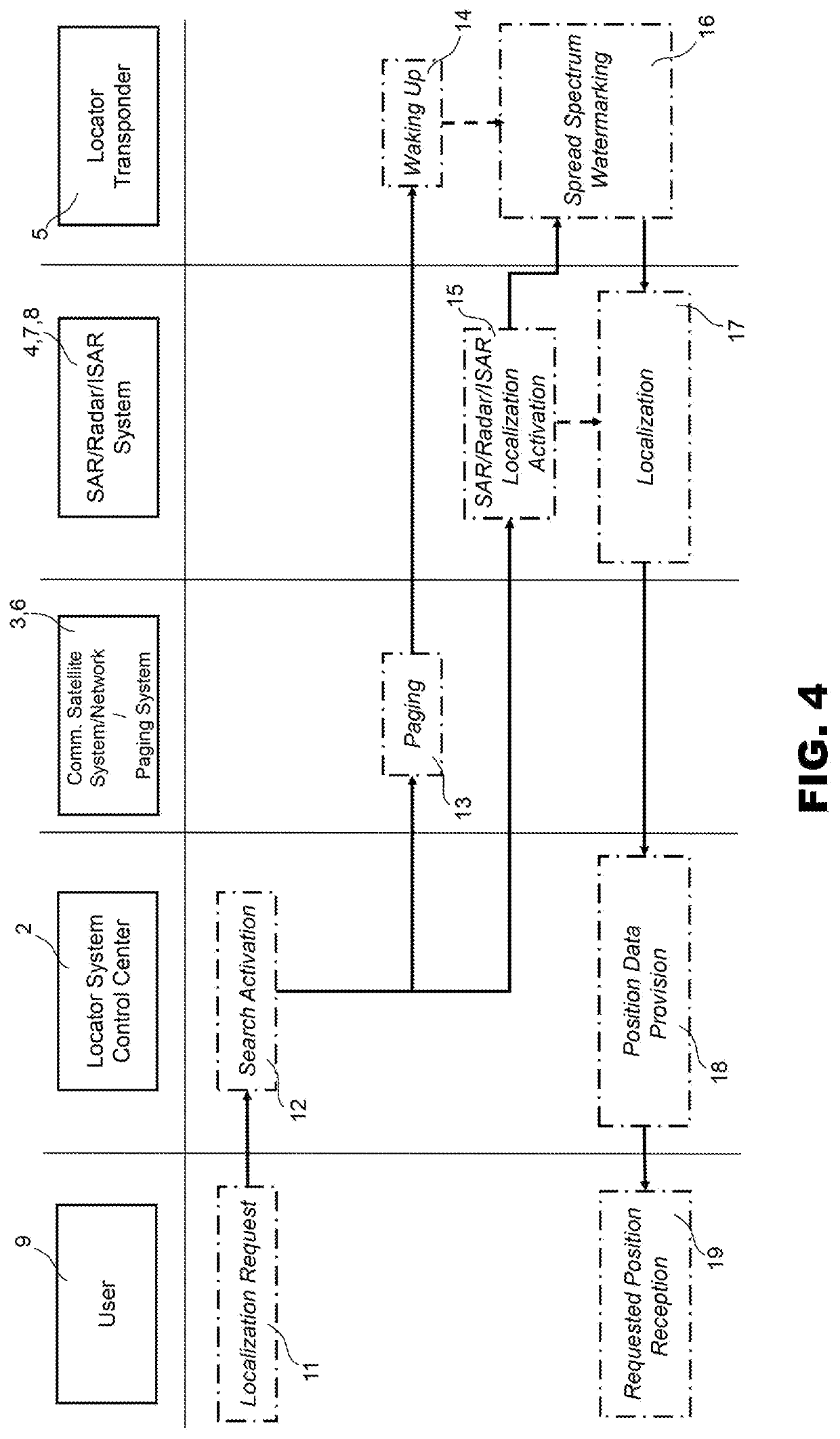Locator System and Related Localization Method and Service with Innovative Time and Frequency Sinchronization of Localizator Transponders
a localizator and locator technology, applied in the field of locator system and related localization method and service with innovative time and frequency synchronization of locator transponders, can solve the problems of increasing the amount of processing required for detecting the signals of the transponder locator, and affecting the link budget, so as to achieve the effect of improving the link budget and adding up downlink and uplink nois
- Summary
- Abstract
- Description
- Claims
- Application Information
AI Technical Summary
Benefits of technology
Problems solved by technology
Method used
Image
Examples
Embodiment Construction
[0204]During the development of the locator system according to WO 2018 / 162756 A1, the Applicant has decided to adopt, for the transponder locator, a frequency reference solution based on the use of a low-cost, low power consumption, poorly accurate local oscillator so that the transponder locator may actually be a small-sized, light, low-cost, low power consumption device.
[0205]The Applicant has, thence, understood that, if the local oscillator is not accurate and stable, carrier frequency recovery should be performed based on a different link than the SAR / radar / ISAR one, since the period of contact with the SAR / radar / ISAR system is too short (e.g., 1s) to allow the locator transponder to carry out an accurate carrier frequency recovery and then transmit the watermarked radar echo signals with accurate and stable carrier frequency. In other words, the carrier frequency recovery is a time-consuming process that cannot be completed (or, anyway, cannot be performed with the accuracy n...
PUM
 Login to View More
Login to View More Abstract
Description
Claims
Application Information
 Login to View More
Login to View More - R&D
- Intellectual Property
- Life Sciences
- Materials
- Tech Scout
- Unparalleled Data Quality
- Higher Quality Content
- 60% Fewer Hallucinations
Browse by: Latest US Patents, China's latest patents, Technical Efficacy Thesaurus, Application Domain, Technology Topic, Popular Technical Reports.
© 2025 PatSnap. All rights reserved.Legal|Privacy policy|Modern Slavery Act Transparency Statement|Sitemap|About US| Contact US: help@patsnap.com



